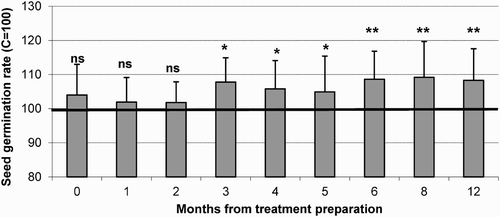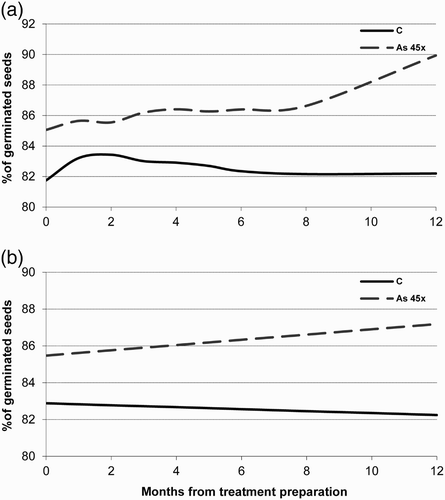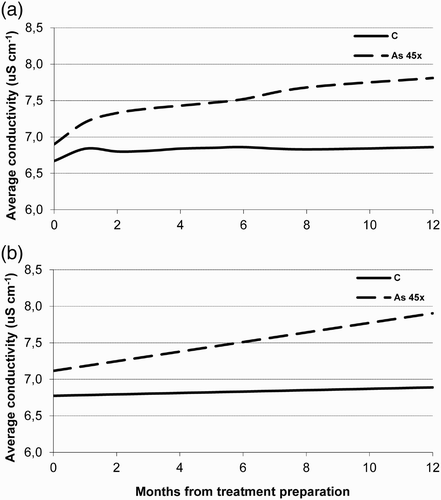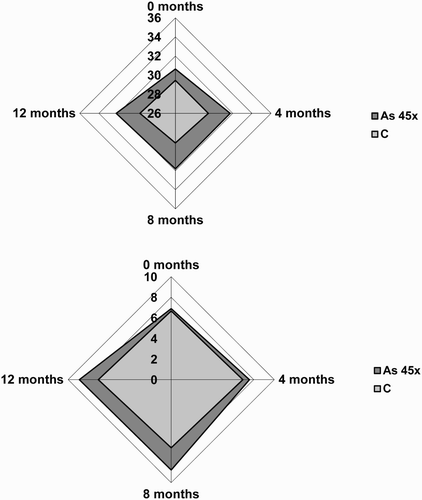Figures & data
Table 1. Exploratory statistics and statistical inference of the wheat germination model.
Table 2. Some exploratory statistics and statistical inference on conductivity (expressed in μ S cm−1).
Figure 1. Average number of germinated seeds for subsequent experiments (control=100); bars indicate standard deviations. ns=not significant; *=significant at p<0.05; **=significant at p<0.01 (Mann–Whitney test).

Figure 2. Trend of cumulative average percentages of germinated seeds: (A) observed cumulative average percentages; (B) linear interpolation.

Figure 3. Trend of cumulative average conductivity: (A) observed cumulative average; (B) linear interpolation.

Figure 4. Radar diagrams showing the aging-time effect (0 to 12 months after treatment preparation) on seed germination (A) and conductivity (B). Germination is expressed in terms of germinated seeds (out of 36) and conductivity as μ S cm−1.
